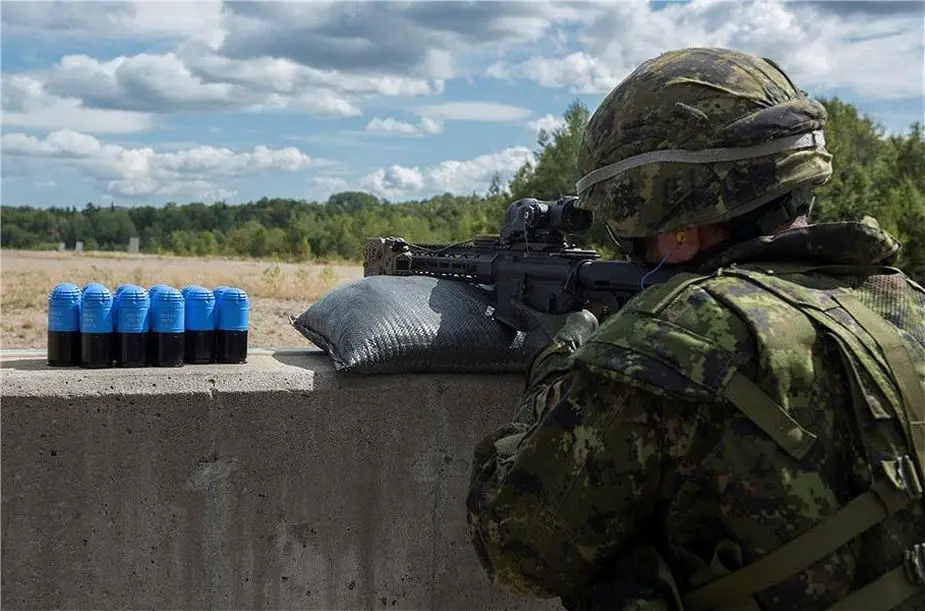Over three weeks in August and September of 2019, Defence Research and Development Canada (DRDC) scientists and Canadian Armed Forces volunteers, came together at 2nd Canadian Division Support Base Valcartier for the Future Soldiers Technologies Trial 2019. (Source Canadian Army)

Canadian soldier lases a target to determine its range in advance of engaging it with a stand-alone grenade launcher. (Picture source Jocelyn Tessier Canadian Army)
In three field experiments, they evaluated laser aiming device (LAD) and laser rangefinder (LRF) capabilities, as well as measures of soldiers’ mental workload. The 3rd Battalion Royal 22e Régiment – colloquially known in English as “The Van Doos” – took the lead in supporting this year’s trials and providing participants.
“We spent many months coordinating this event because we believe it is imperative that we evaluate first-hand the capabilities offered by the systems currently available,” said DRDC defence scientist Mike Tombu, who was overall coordinator for the trial.
“This was not about testing products, or evaluating shooters. We wanted to gather input from those individuals who will be using our research to gauge the value of LAD capabilities, including LRFs and visible lasers, the impact of weapon weight on shooting performance, and the cognitive workload of advanced navigational systems.”
In this article, the second in a series of three, we will look at grenade launchers and laser rangefinders.
Valcartier, Quebec — Scientific advances need real-world testing to demonstrate their worth, particularly when defence and security issues are at stake.
Grenade launchers clearly have an advantage over tossing. However, the more distant the target, the less accurate the hit – whether propelled by an arm or a launching instrument.
Laser rangefinders (LRFs) emit laser beams at the push of a button, which travel at the speed of light to then bounce off distant objects. The LRF’s high-speed internal clock measures the total time it takes from departure to return and calculates the distance travelled. This trial examined the impact of an LRF on the performance of grenadiers.
As Mr. Tombu explained: “We asked the questions: Does the addition of an LAD with an LRF capability improve grenadier accuracy? Does the LRF benefit depend on whether the grenade launcher is configured in a stand-alone or underslung configuration?”
To find out, the soldiers used a Colt Canada 40 mm Eagle grenade launcher in three different scenarios: a stand-alone configuration with leaf sight only; a stand-alone configuration with a leaf sight as well as a rifle-mounted LRF; and in an underslung configuration that included an LRF-enabled LAD.
“Grenades have a relatively small kill radius, so accurate ranging is important,” said Mr. Tombu. “This experiment evaluated grenadier performance with and without an LRF capability. If the addition of an LRF makes a difference, then determining where best to incorporate it becomes the next question – in the LAD, in the grenade launcher sight, or as a stand-alone capability.”














